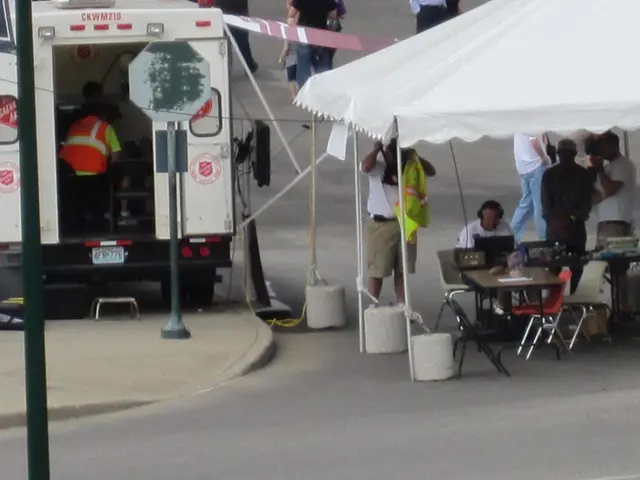Big trouble trucks: SUVs and LTVs behind urban chaos
Large Sports Utility Vehicles (SUVs) Contribute to Congested Traffic and Pose Greater Risks than Regular Cars
These days, our vehicles are as bulky as they've ever been. Take the Ford F150, for instance. Over the years between 1991 and 2025, it gained 75cm in length, 20cm in height, and 483 kg in weight. It ain't alone in this trend, though—the automotive market's drooling over supersized SUVs and LTVs like never before.
Eight out of the top ten passenger vehicles in the USA, for example, were SUVs or LTVs by 2025. In New Zealand, nine out of the top 20 sellers in 2024 were the same. And globally, SUVs accounted for an impressive 48% of new car sales in 2023, up from just 15% in 2010.
But all that extra room comes with a hefty price tag—one for our wallets, and another for the environment.
Cars are as toxic as countries
When it comes to harming Mother Nature, cars lead the pack. Emissions from road transport responsible for 15% of all global CO2 emissions, and those from gas-guzzling SUVs and LTVs play a huge role in that[1]. If SUVs ranked as a country, they'd be the world's fifth largest CO2 emitter, surpassing Japan and other major economies[2].
Electric SUVs and LTVs may seem like a greener alternative, but they're far from clean. Both types of vehicles churn out vast quantities of tyre emissions—tiny bits of rubber and other materials shed as tyres wear down. These can end up in our waterways[3], and even the smallest particles can become airborne, posing multiple health and environmental threats[4].
City wounds caused by tank-like vehicles
Two recent studies highlight the problems that big ol' SUVs and LTVs cause when they roll through city streets. One looked at traffic, while the other focused on pedestrian and cyclist safety. Yet, both came to the same heartbreaking conclusion—these beasts are wreaking havoc on urban life.

Gridlock nightmares
If traffic's driving you nuts, blame those gas-hogging giants, suggests a new study in the journal Transportmetrica A. Researchers from the University of Sydney and City University of Hong Kong examined 25 years of traffic data from Minneapolis-St. Paul, finding that the increased number of large vehicles on the roads has worsened traffic congestion.
The addition of any vehicle will slow traffic flow, but SUVs and LTVs have a more significant impact thanks to their sheer size and weight. As a result, smaller cars experience greater delays when caught behind these monsters of the streets[5].
Chipping away at street safety
The threat SUVs and LTVs pose to pedestrians and cyclists needs no sugarcoating. An earlier meta-analysis revealed that collisions involving these big beasts were significantly more likely to result in severe injuries or fatalities for vulnerable road users[6].
The bad news is that the findings of this recent study support cities' efforts to minimize the presence of SUVs and LTVs on their streets[7]. From hiking parking charges to banning ads for these vehicles like they were yesterday's newspaper, cities are piling up obstacles for these gas-guzzling monsters, protecting their citizens from excessive pollution and peril.
So, boot 'em out and breathe easier—our streets and our spirits will thank us.
[1] BBC report: SUVs "added to climate change"[2] BBC report: Ranking countries by CO2 emissions[3] Tyre particles in our waterways: Impacts for water and health[4] Tyre pollution: A silent war on human health and the environment[5] Traffic congestion: How SUVs are slowing things down[6] Impact of SUVs and LTVs on Pedestrian and Cyclist Safety: A Meta-analysis[7] Cities taking steps to curb SUV use: A closer look at parking charges and advertisement bans

- The trend toward supersizing in the automotive industry is evident, with SUVs and LTVs becoming more prevalent, accounting for 48% of new car sales in 2023 and dominating the market in many countries.
- While these vehicles offer increased space, they also contribute significantly to environmental harm, with emissions from SUVs alone accounting for 15% of global CO2 emissions.
- In terms of health and environmental threats, both conventional and electric SUVs and LTVs produce tyre emissions that can end up in waterways and, even in their smallest particles, pose health risks.
- Two recent studies have shown that SUVs and LTVs contribute to urban chaos, causing traffic congestion and increasing delays for smaller cars, as well as posing a significant risk to pedestrian and cyclist safety.
- Research suggests that the increased number of large vehicles on roads has worsened traffic congestion, and smaller cars experience greater delays when caught behind SUVs and LTVs due to their size and weight.
- Collisions involving SUVs and LTVs are significantly more likely to result in severe injuries or fatalities for vulnerable road users, and cities are taking steps to curb their use by hiking parking charges and banning ads for these vehicles.
- With the potential to reduce excessive pollution and protect citizens from peril, limiting the presence of SUVs and LTVs on streets is a move supported by environmental science, health-and-wellness, and finance industries, as well as transportation and automotive technology experts.







